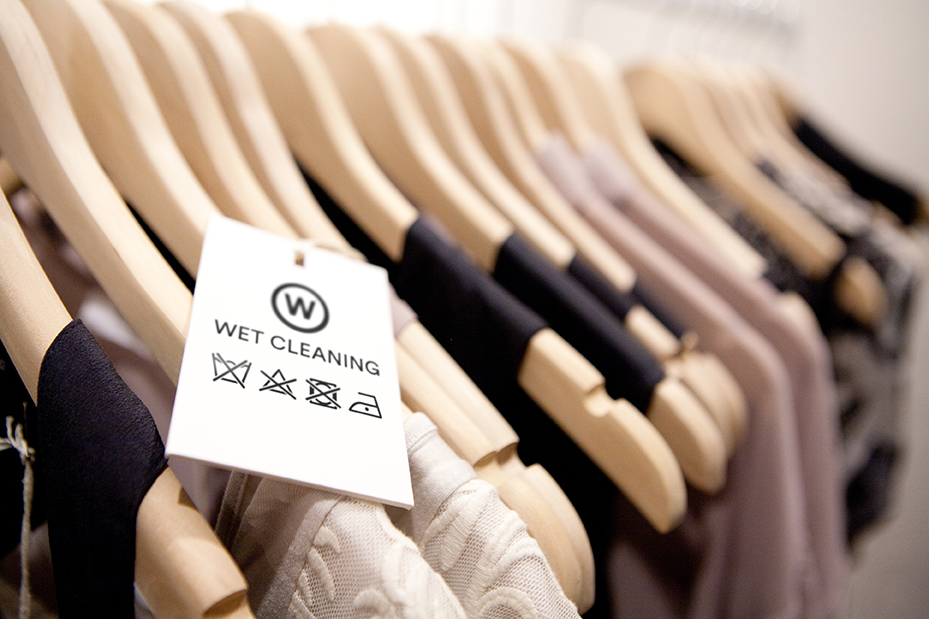
Is Wet Cleaning the Solution?
Wet cleaning clearly has us wondering aloud: is this the solution to the current widespread cleaning system (dry cleaning)?
Let us give this some thought and think about what the motivation behind creating a new cleaning system was when the solution for cleaning delicates made from a wide variety of fabrics was theoretically worked out thanks to the famous dry cleaning method. Wet cleaning started from the desire to complement a chemical solvent cleaning system which by itself (by definition) only removes grease stains. When described like this in simplified terms, it may come across as silly unless we are able to understand that 80% of the stains in our life are water-soluble. In other words, they dissolve in water and not in a chemical solvent. Wet cleaning also helps as it is less expensive.
Although in order to know whether or not it is the solution for this business we need to compare it and weigh up the pros and cons against dry cleaning.
As we have seen, there is no perfect, all-round system since both should hypothetically and in practice go hand-in-hand, but we will see that this is not the case.
Wet cleaning is making headway in its fight for a share in dry cleaners, hotels, care homes and student lodgings due to several important attributes:
The first one is purely financial as it is 40% cheaper than dry cleaning.
Secondly, the quality of wet cleaning surpasses that of dry cleaning as it is able to remove invisible dirt such as organic waste including sweat, urine and the bacteria caused by these.
Thirdly, the systems needed for wet cleaning are significantly cheaper than a machine that only does dry cleaning.
Fourthly, thanks to this machine we will be able to expand our service offer to wash shirts, duvets, blankets, towels, sheets and more. Etc.
And we have left what may be the most important one for last, health. It has been shown that working with solvents is detrimental for our health.

If we draw this comparison to the majority of alternative dry cleaning systems, we will see that wet cleaning is all the more necessary for good garment finishing since the dirt trapping power of these alternative solvents is less than that offered by PERC cleaning.
In terms of “productivity”, wet cleaning outperforms dry cleaning. Right now we can process a garment in under an hour since short, low-temperature cycles are used. In one hour we can do more than two loads of wash, which means we can boost hourly productivity.
Looking at the durability of garments, we find this increases thanks to wet cleaning, which means we can enjoy our clothes in good conditions for longer. Let us not forget that PERC is a very heavy solvent, causing fabrics to undergo a much stronger mechanical action of friction during the washing process.
Considering the main way today’s market manufactures clothing we can see that there is a clear trend towards manufacturing and using water “washable” garments, so we could say that wet cleaning is the most suitable system right now.
But, is this the case all around the world? News from my colleagues all around the world confirms this: today this system is used around the globe since there is only a small number of fabrics that should not be wet cleaned.
What is the reason behind this system not being used by the vast majority of professionals?
Human beings are creatures of habit. Changing the way we act is a real nuisance, and fills us with uncertainty. Plus, most countries do not have vocational centres teaching the trade of dry cleaning or laundering, which means the techniques used are those passed down by our ancestors, or those learnt from other professionals. This causes us to follow the beaten path, and the individuals who truly dare to stray away from this path are few, and almost always do so by accident or out of pure necessity.
This lack of training leads to closed-mindedness in professionals, and only through occasional workshops and enormous effort do they begin to accept the obvious fact that this system protects the fabric, makes colours pop, and the feel is clearly better than that offered by dry cleaning. Then the end customer ends up noticing the difference and asks for this system, which makes us confident about the quality of the finished product.
Today, despite not being a closed system as we conduct research on a daily basis and frequently innovate to make it fit the needs of the market, we are experiencing a higher success rate for wet cleaning textiles, which previously was impossible to handle with water.
Breaking down this system, which uses short, low-temperature cycles, with very low levels of water, adapted chemicals and a different programme compared to traditional washing, we can say:
WET CLEANING is a professional dry cleaning system where we replace chemical solvents with the most widespread and natural solvent on our planet, WATER.
We could safely say that wet cleaning is the complementary system that became the alternative system.
Jose Luis Alvarez
Seitz
0 Comments